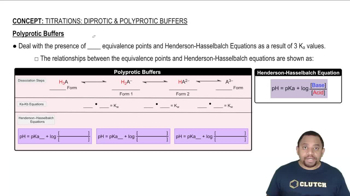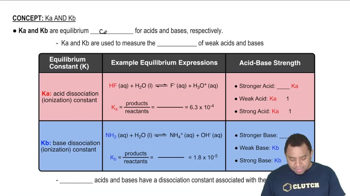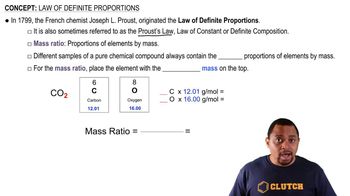Here are the essential concepts you must grasp in order to answer the question correctly.
Polyprotic Acids
Polyprotic acids are acids that can donate more than one proton (H+) per molecule. Each ionization step has its own dissociation constant (Ka), which indicates the strength of the acid at that step. For example, H2A can lose its first proton to form HA-, and then lose a second proton to form A2-. Understanding the sequential ionization is crucial for calculating the contributions to hydronium ion concentration.
Recommended video:
Dissociation Constants (Ka)
The dissociation constant (Ka) quantifies the extent to which an acid dissociates in solution. A higher Ka value indicates a stronger acid that dissociates more completely. In the case of polyprotic acids, the first dissociation (Ka1) is typically stronger than the second (Ka2), which affects the calculation of hydronium ion concentration from each ionization step. This concept is essential for determining the contributions of each step to the overall acidity of the solution.
Recommended video:
Characteristics of Ka and Kb
Neglecting Contributions
In weak acid equilibria, contributions from subsequent ionization steps can often be neglected if they are significantly smaller than the contributions from the first step. This is typically assessed by comparing the Ka values and the concentrations involved. For example, if the concentration of H3O+ from the second ionization is less than 5% of that from the first, it can be considered negligible, simplifying calculations and analysis.
Recommended video:
Law of Definite Proportions
 Verified step by step guidance
Verified step by step guidance

